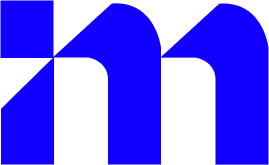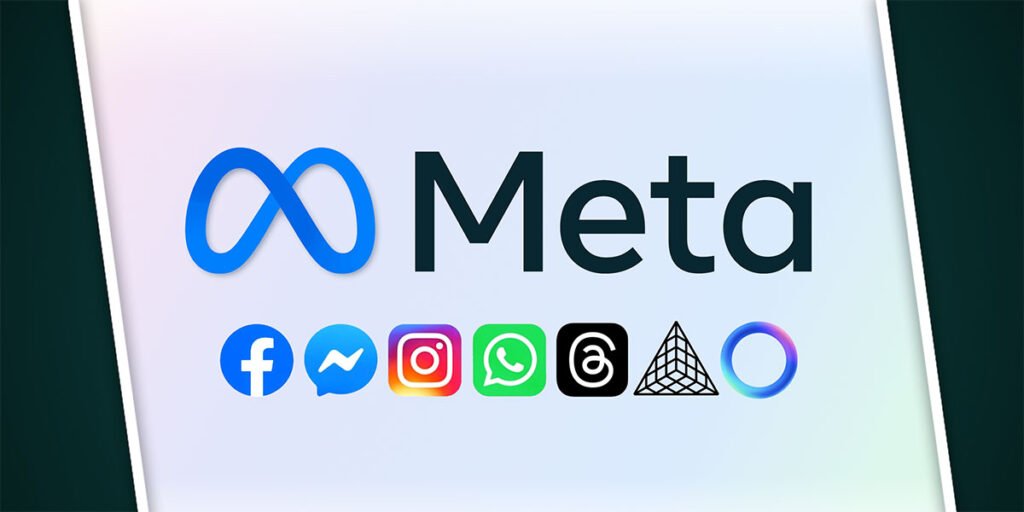In 2025, Meta’s advertising ecosystem is faster, smarter, and less forgiving. For agencies managing multiple client accounts, ad objectives, and verticals, the margin for error is shrinking. Gone are the days when simply increasing ad spend guaranteed more conversions. Now, budget optimization is the difference between scalable growth and wasted spend.
Meta’s algorithm now demands tighter performance signals, cleaner attribution, and smarter segmentation. And for media buyers, it’s not just about performance anymore, it’s about profitability, efficiency, and predictability at scale.
Whether you’re running CBO or ABO campaigns, optimizing ad budget on Facebook now means knowing where, how fast, and how often to allocate spend. For agencies juggling multiple KPIs across accounts, building a repeatable Meta ads strategy for agencies is essential.
In this guide, we’ll cover:
- The core principles of ad budget control in 2025
- Strategic differences between CBO and ABO
- Automation rules for multi-account scaling
- And how to scale client campaigns without overspending
It’s not about spending more, it’s about spending right.
Core Principles of Meta Budget Optimization
More budget doesn’t mean more success. In fact, overspending too soon is one of the fastest ways to lose ROAS and reset the learning phase. That’s why top media buyers now operate with precision, not scale-first thinking.
Effective Facebook ads budget control begins with controlled testing. Allocate small test budgets to ad sets with clearly defined objectives. Prioritize CPA, ROAS, and conversion rate over vanity metrics like impressions or reach. Every dollar spent should be attached to a performance metric you can monitor in real-time.
Meta’s learning phase still matters in 2025. If you push budgets too hard, too fast, you risk breaking optimization windows. Instead, allow campaigns to stabilize before increasing spend, typically by 20–30% every 3–5 days, depending on performance.
Also, don’t spread the budget too thin. A few well-structured, high-signal ad sets outperform campaigns scattered across fragmented audiences.
For agencies, this means data-backed spend decisions across multiple clients:
- Is the campaign hitting its CPA targets?
- Are ROAS trends improving or flatlining?
- Is budget allocation aligned with funnel stages and audience behavior?
When you manage Meta ads with these core principles, you don’t just scale, you scale profitably. And that’s the real win in 2025.
CBO vs ABO: When & Why Agencies Should Use Each
Every agency media buyer eventually asks: Should we run CBO or ABO? The truth is, it depends on what phase you’re in and what kind of control you need.
Campaign Budget Optimization (CBO) lets Meta distribute budgets across ad sets based on real-time performance. It’s ideal for scaling, especially once you’ve already identified what’s working. CBO saves time, reduces manual adjustments, and performs well with larger datasets. For ecommerce, it’s often the go-to once top-performing creatives and audiences are dialed in.
On the flip side, Ad Set Budget Optimization (ABO) offers tighter control. It’s perfect during the testing phase where you want to isolate variables, like testing different audiences or creative hooks without interference. ABO works particularly well for B2B and coaching industries, where performance can be highly segmented and specific.
The best budget strategy for agencies is often a hybrid:
- Use ABO to test creatives, audiences, angles, and offers at a controlled pace
- Transition winners into CBO campaigns to scale effectively with minimal manual input
Industry use cases:
- Ecommerce: Test products with ABO, scale winners with CBO + LLAs
- B2B: Use ABO for lead segmentation, later combine into retargeting CBO
- Coaching/Info Products: Run ABO to test hook styles, scale top-performing formats with CBO
In 2025, CBO vs ABO on Facebook isn’t a debate, it’s a strategy sequence. Used right, both unlock scales at different stages of the campaign lifecycle.
The Budget Phases
A winning Meta ads budget strategy isn’t about starting big, it’s about scaling smart through structured phases. Agencies that follow a phased ad budget lifecycle see better ROAS, lower CPA, and fewer optimization resets.
Phase 1 – Test (₹500–₹2,000/day or $20–$100/day)
Use ABO to test 3–5 ad sets with different creatives, angles, and hooks. Keep your targeting narrow but relevant. The goal isn’t conversions, it’s identifying what resonates.
Phase 2 – Learn (₹5,000–₹10,000/month)
Double down on what worked in Phase 1. Refine your audiences, test creative variants, and begin tracking ROAS, CTR, CPA, and CVR. Here’s where you introduce micro-optimizations, test exclusions, and get serious about funnel alignment.
Phase 3 – Scale (₹10,000+/month)
Once performance stabilizes, move top performers into CBO. Activate Lookalike Audiences, scale budget 20–30% every few days, and start using automation rules. Begin exploring broader audiences with proven creative.
This phased approach prevents the most common mistake in budget scaling: jumping to high spend without validated learnings. Even agencies with large retainers or client budgets should avoid skipping steps.
Following the Meta ad spend ladder ensures every dollar works harder, especially when running multiple accounts.
Test → Learn → Scale. That’s how you grow sustainably in 2025.
Automated Rules for Scaling & Cost Control
Manual optimization doesn’t scale, automated rules do. As your campaigns grow across multiple clients or product lines, automation ensures consistent performance without constant supervision.
Start by implementing basic Meta ad scaling automation:
- Scaling Up:
Example rule – If ROAS > 3 for 3 consecutive days, increase budget by 20%
This helps capitalize on winning momentum while avoiding over-scaling too fast - Cost Control / Pausing:
Example rule – If ROAS < 1.5 or CPA > target for 3 days, pause or reduce budget
Prevents wasted spend on declining ad sets before it drags down account performance - Frequency Capping:
Set a frequency threshold (e.g., frequency > 3 within 7 days) to rotate creatives or pause overexposed ads
This keeps your audience from burning out, especially in smaller markets or niche offers
By combining Facebook ads automation rules with structured campaign phases, you create a system that responds to data in real time, not guesswork.
These smart budget rules are essential for agencies managing multiple accounts, ensuring you spend more when performance is strong and pull back when it drops, without manual daily checks.
Multi-Client Budget Management Tips
For agencies, managing ad budgets isn’t just about performance, it’s about prioritization, pacing, and visibility across all accounts. Without the right systems, it’s easy to overspend on low-priority campaigns while underserving your best-converting clients.
Here’s how to manage multiple Meta ad accounts effectively:
1. Allocate Budgets by Client Goals
Each client has different KPIs. Prioritize budget based on objective:
- Sales-focused: Higher daily budgets and performance-based rules
- Lead-gen: Mid-level budgets with CPA optimization
- Awareness: Lower daily spend but wide reach and brand lift metrics
2. Segment Campaigns by Funnel Stage
Keep prospecting and retargeting budgets separate. This allows more accurate pacing and better ROAS tracking. Avoid lumping them into one campaign structure.
3. Use Agency Dashboards & Budgeting Tools
Tools like Revealbot, Madgicx, and Hyros give you:
- Multi-account budget views
- Automated scaling/pause rules
- Cross-client reporting
- Attribution insights
These tools are critical for agency Facebook ads management at scale.
4. Monitor Budget Pacing Weekly
Create a pacing dashboard to track daily/weekly/monthly spend across all accounts. Look out for underspending (due to learning phase issues) and overspending (caused by runaway campaigns or automation errors).
By using the best tools for ad budget tracking and aligning budgets with actual client goals, you’ll manage multiple ad accounts without overwhelm, and deliver predictable results.
Real-World Budget Optimization Scenarios
Let’s break down how budget optimization looks across different industries, based on real agency use cases.
Ecommerce: CBO Scaling
An online apparel brand started with a $50/day CBO campaign targeting Lookalike Audiences from past purchasers. After 7 days of strong ROAS (above 4.0), the agency introduced automated rules: If ROAS > 3 for 3 days, increase by 20%.
Within 30 days, the campaign scaled to $500/day with stable profitability, thanks to dynamic product ads and frequency-controlled creatives.
Coaching: ABO Control for High-Ticket Sales
A personal development coach promoted a high-ticket course via ABO campaigns. Each ad set targeted a different niche persona (e.g., freelancers, agency owners, creators). This ABO approach gave control over spend, allowing the agency to isolate top-performing segments and shift the budget toward the best CPL (Cost Per Lead).
Local Lead Gen: Testing on a Tight Budget
A dental clinic had a daily budget of ₹1,000 (~$12). The agency used ABO to test three hyper-local audiences with different creatives. The best-performing ad set hit a CPL of ₹125, and the budget was consolidated into that segment within a week.
These scenarios show that Meta ads case studies aren’t one-size-fits-all, budget strategy for different industries should align with funnel depth, audience size, and offer value.
Reporting & Performance Auditing
No matter how good your campaigns are, clear, data-driven reporting is what builds trust with clients and improves results. For agencies, Facebook ads performance tracking must go beyond vanity metrics.
Here are the KPIs that truly matter:
- ROAS (Return on Ad Spend)
- Cost Per Lead (CPL) or Cost Per Purchase (CPP)
- Click-Through Rate (CTR)
- Conversion Rate (CVR)
- Ad Frequency (to monitor fatigue)
Create a structured weekly and monthly audit process:
- Compare spend vs. performance
- Flag underperforming creatives or ad sets
- Monitor pacing against monthly goals
- Document learnings for future tests
To streamline this, use reporting tools like Google Looker Studio, Supermetrics, or custom dashboards connected to Meta Ads Manager. These tools help aggregate performance data across multiple clients and present it in a clean, accessible format.
Client communication is equally important. Use these reports to set realistic expectations, show strategic thinking, and back every decision with numbers. When clients see transparent, consistent reporting, they gain confidence, even when performance fluctuates.
In 2025, your agency’s edge won’t just come from ad buying skills, it’ll come from how you communicate value through data.
Final Checklist for Meta Ad Budget Optimization
Before you launch or scale any campaign, take a moment to run through this checklist. It’s not about chasing quick wins, it’s about making every dollar work smarter for long-term success. Here’s what top-performing Meta ad teams do consistently:
- Match Campaigns to Goals: Organize ads based on business objectives (like awareness, leads, or sales) and where the user is in the funnel, top (TOF), middle (MOF), or bottom (BOF).
- Test Smart, Then Scale: Use ABO (Ad Set Budget Optimization) to test creatives, audiences, and copy. Once you find what works, shift the winners to CBO (Campaign Budget Optimization) for scalable growth.
- Monitor Daily, Audit Weekly: Check your ad spend daily to spot spikes or dips early. Then, dive deeper once a week to spot trends and make strategic decisions.
- Use Automation + Manual Insights: Set up automated rules to control spend, pause underperformers, and manage ad frequency, but never skip human analysis.
- Budget by KPI, Not Defaults: Don’t rely on Meta’s suggested budgets. Align every dollar to your client’s actual business goals and key performance indicators (KPIs).
- Refresh Creatives Often: Rotate ad visuals and messaging regularly. Watch for signs of fatigue like dropping CTRs or rising CPAs.
- Report Clearly and Often: Keep things transparent with clean, real-time reports. Highlight not just what worked, but why it worked.
This isn’t a growth hack. It’s a repeatable system that helps you scale with confidence. Stick to this playbook, and you’re not just optimizing spend, you’re building long-term trust and retention.
Conclusion
Scaling Meta ad spend in 2025 isn’t about who spends the most, it’s about who spends the smartest. The agencies seeing the best results are the ones combining data, discipline, and strategy into every phase of campaign planning.
If you’re still running on guesswork or outdated structures, now’s the time to realign your system. Revisit how you segment campaigns, set budgets, and report performance. Better frameworks drive better results.
Meta Description (under 160 characters):
Master Meta ads budget optimization in 2025, strategies for agencies to scale profitably, improve efficiency, and manage multiple accounts with precision.




